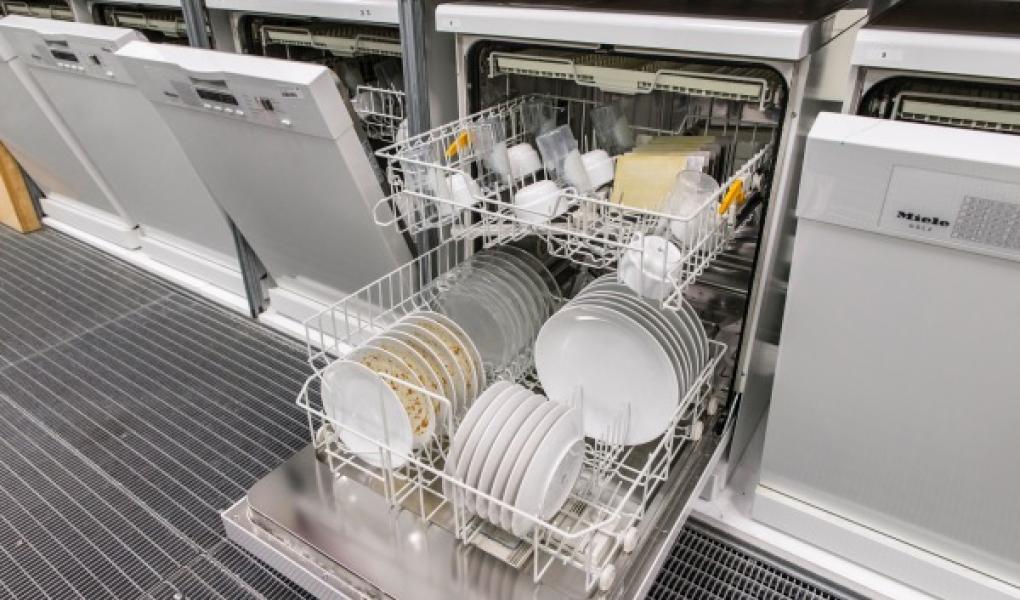The test protocol is based on the industry body IKW’s recommendations and guidelines as well as SGS Fresenius in-house methods, well established in the industry.
The laboratory test consists of five parts:
- Cleaning efficiency
- Shine part 1: Rinsing efficiency
- Shine part 2: Counteract filming (grey coating)
- The ability to eliminate grease-based residues
- Stainless steel discoloration
The tests are performed in the relevant water hardness for the specific market.
Cleaning efficiency
The cleaning efficiency is tested on eight different types of food residues and stains which, based on their composition, can be divided into four categories: bleachable, protein-based, starch-based, and fat-based. Food residue and stains are applied to different types of carriers: plates, cups and bowls in porcelain, plates in stainless steel and plates in glass.
The cleaning efficiency is tested on the following dried in food residues and stains:
- Potatoes, corn, rice, and wheat
- Cooked pasta mixed with water
- Minced meat with eggs
- Milk (milk skin)
- Egg yolk
- Crème brûlée
- Tea stains
- Grease-based residues and stains
Cleaning efficiency is tested five times per type of residue/ stain and detergent. Purity is assessed visually or gravimetrically (by weighing).
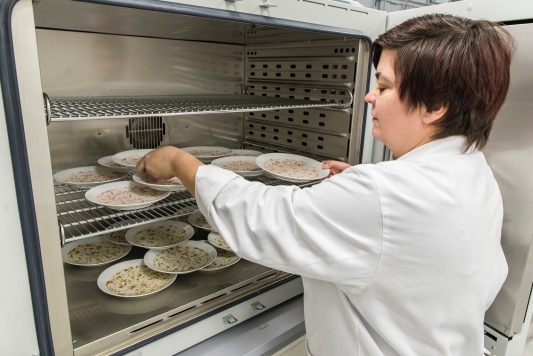
Gloss part 1: Rinsing efficiency
The cleaning program is followed by rinsing and drying. When the dishes are ready, it should not carry traces of food residue or detergent residue. In the test, the dishwasher is loaded with five different carriers (see below) that have been soiled with starch, egg whites and vegetable and animal fat. After the end of the washing program, the dishes are allowed to rest for 10 minutes with the door open to cool. The rinsing efficiency is then evaluated in a “black box” (black box with defined light conditions) to be able to see stains from dried drops or stripes more clearly. The assessment is made both visually and with the help of a digital image analysis instrument.
Carriers:
- Blue plates in melamine
- Black glass plates
- Black porcelain plates
- High drinking glasses
- Stainless steel cutlery
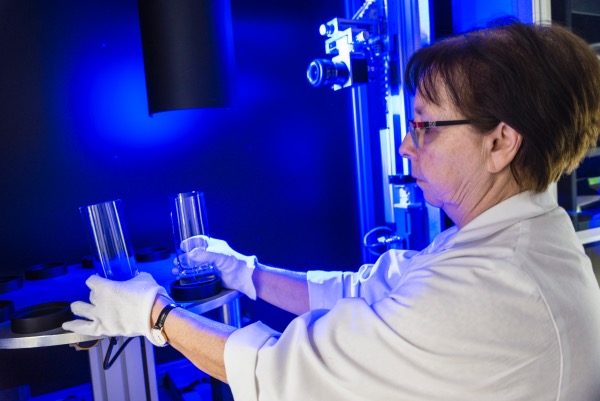
Shine part 2: Counteract filming (grey coating)
The detergent’s ability to counteract the build-up of filming (grey coating) is tested in total 30 cycles per product. In the test, the machine is loaded with three different carriers (see below) soiled with tomato ketchup, mustard, sauce, potato starch, benzoic acid, egg yolk, margarine, and milk. After the washing program is finished, the dishes are allowed to rest for 30 minutes with the door open to cool. The presence of filming (grey coating) is evaluated visually after 30 repetitions.
Carriers
- Crystal glass
- Porcelain
- Stainless steel cutlery
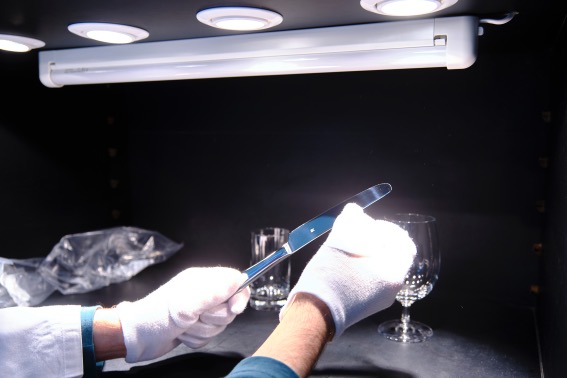
The ability to eliminate grease-based residues
The detergent’s ability to eliminate grease-based residues is tested in a total of 30 repetitions per detergent. In the test, the dishwasher is loaded with clean glasses, knives, and crockery. 50 grams of a standardized creamy paste containing oily ingredients are added to the upper basket of the dishwasher. After 30 repetitions, the cleanliness of the dishes and residues in the dishwasher’s bottom sieve are assessed. The assessment is made visually.
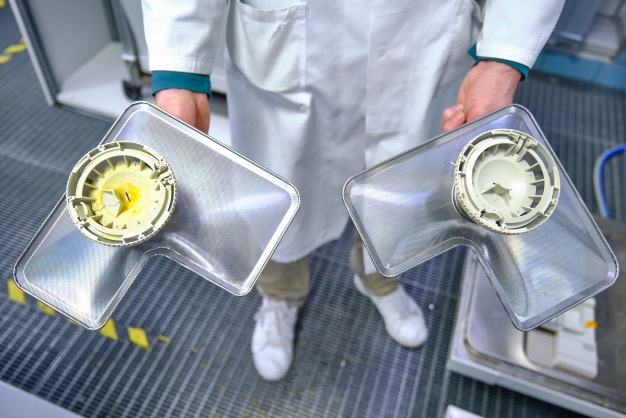
Stainless steel discoloration
The effect of the detergent on the shade of stainless steel (if the surface becomes darker) is evaluated after a total of 30 cycles. The evaluation is made on stainless steel cutlery and on the inside of the dish washing machine.
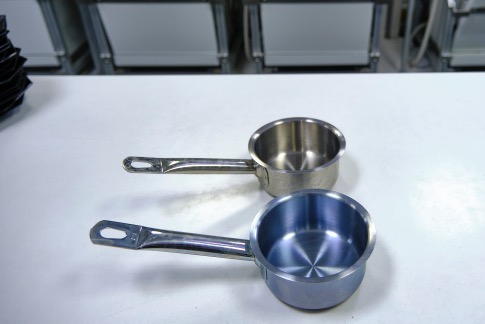
Interpretation and grading of test results
The measurement results from the test are interpreted and graded in consultation with the laboratory. The grading uses a 10-point scale, where 10 is the best. A grade of less than 6 is only given if the performance is poor or worse than one might reasonably expect for this type of product. The grades from the different elements of the test are combined to give an overall grade, using the following weighting:
Cleaning efficiency 60%
Potatoes, corn, rice, and wheat 10%
Cooked pasta mixed with water 10%
Minced meat with eggs 10%
Milk (milk skin) 10%
Egg yolk 10%
Crème brûlée 10%
Tea stains 20%
Grease-based residues and stains 20%
Shine part 1: Rinsing efficiency 8%
Only the results for stains on tall drinking glasses and stainless-steel cutlery are weighted in the result (50% each).
Shine part 2: Counteract filming (grey coating) 17%
Only the results for crystal glass and stainless-steel cutlery are weighted in the result (50% each).
The ability to eliminate grease-based residues 10%
The ability of the detergent to dissolve and clean grease-based residues on the dishes and in the machine’s bottom sieve. The highest weight is placed on the bottom sieve with 40%. Glasses, plastics, and stainless-steel cutlery are weighted 20% each.
Stainless steel discoloration 5%
Discoloration of the machine interior and cutlery are weighted 50% each.
Criteria for Testfakta quality and performance endorsements
Best in test
In a benchmark test with the aim of appointing a test-winning product, “Best in test”, a representative selection of comparable products is tested for a specific market. The product that performs overall best (highest overall grade) is crowned the winner.
Verified Quality & Performance
In a verification test, a specific automatic dishwashing detergent is tested independently or in comparison with a few selected reference products. Evaluation and rating follow the same guidelines as for a benchmark test. The criteria for qualifying for Testfakta Verified Quality & Performance are an overall rating of at least 8.0 (+/- 2.5%) and no sub-rating (1-5 above) below 6.0 (+/- 2.5%).

